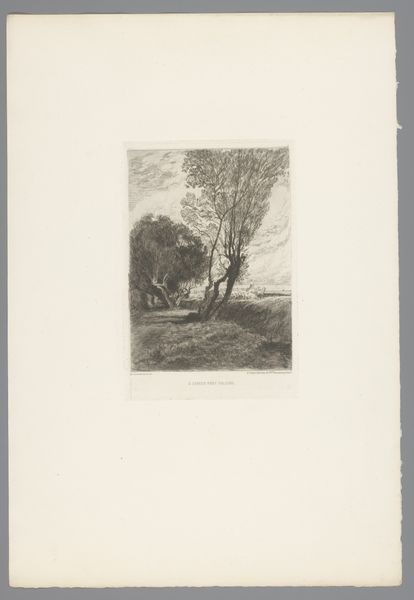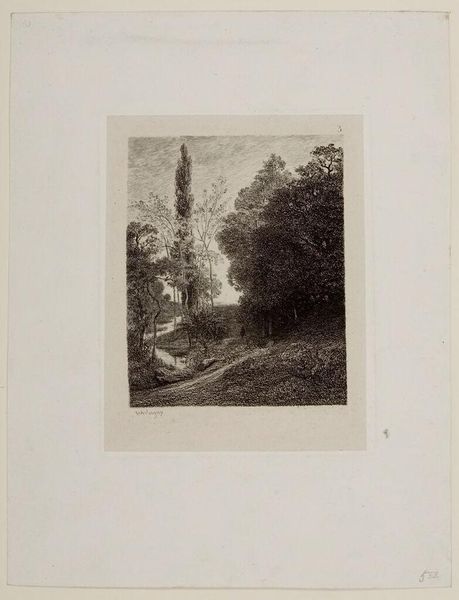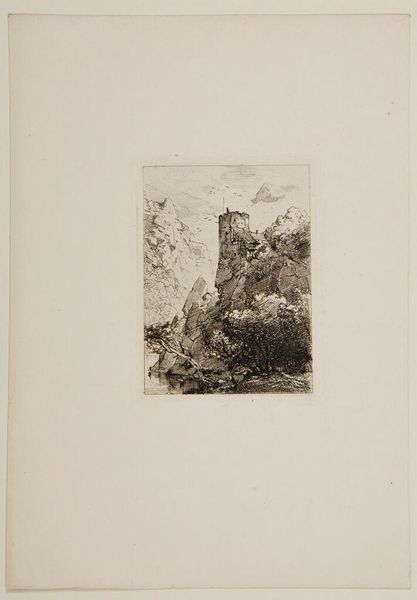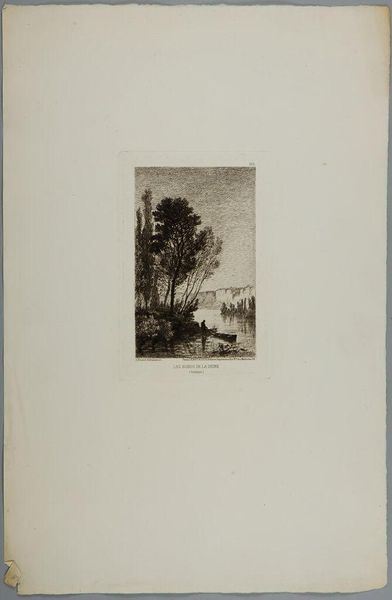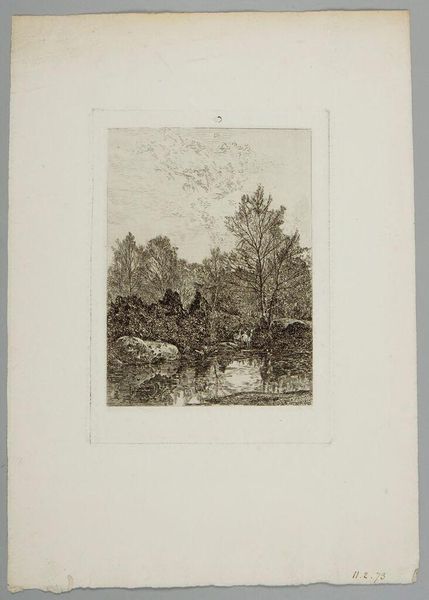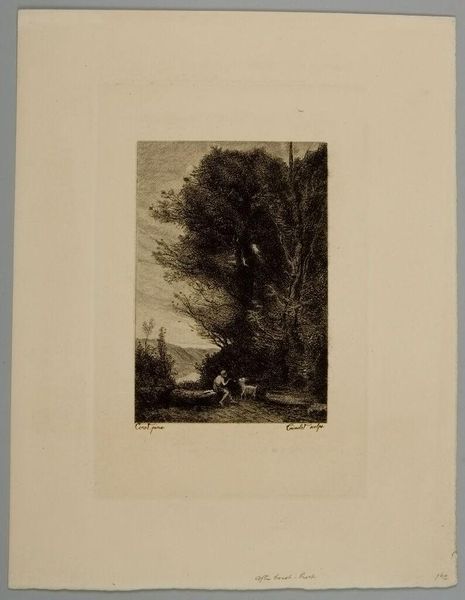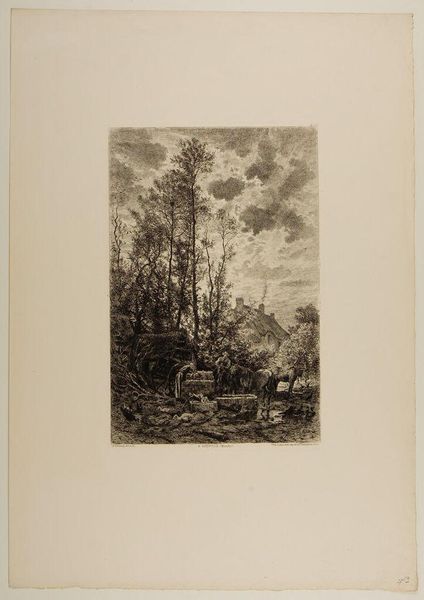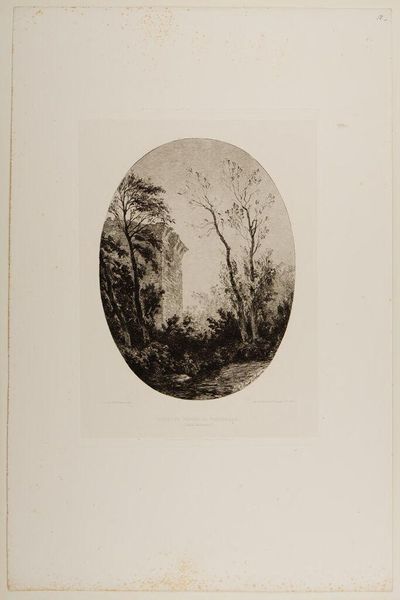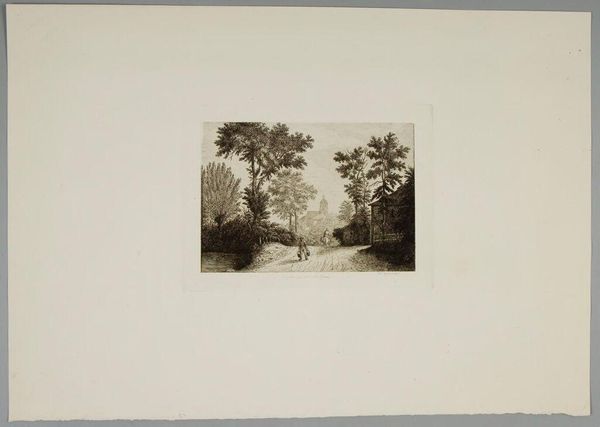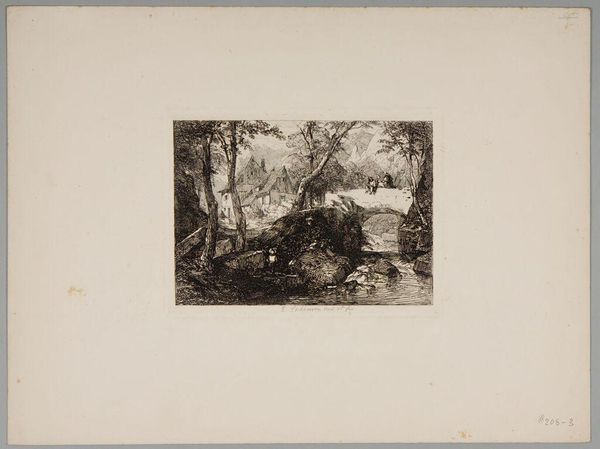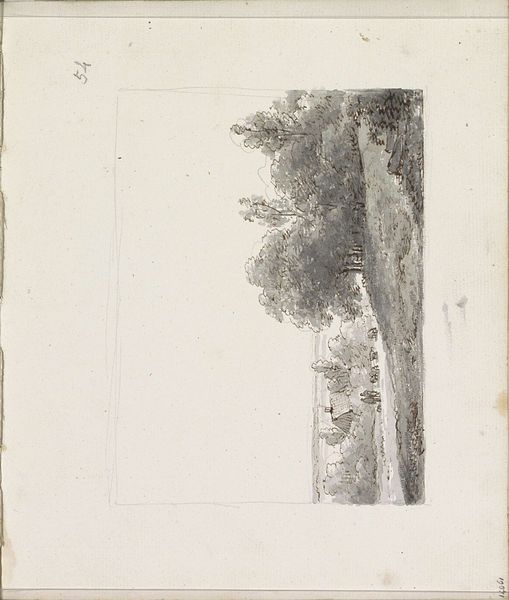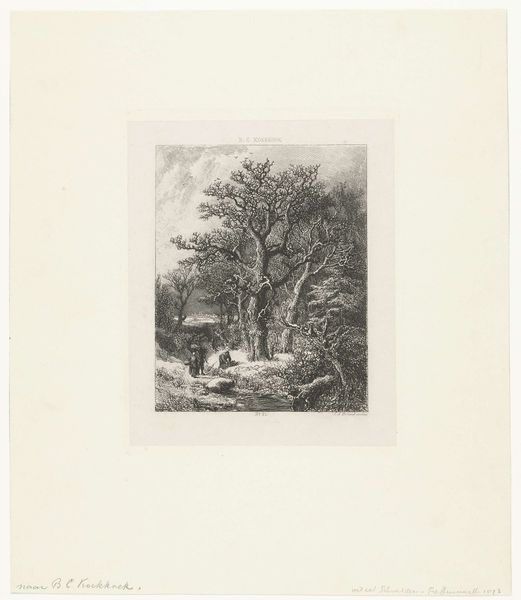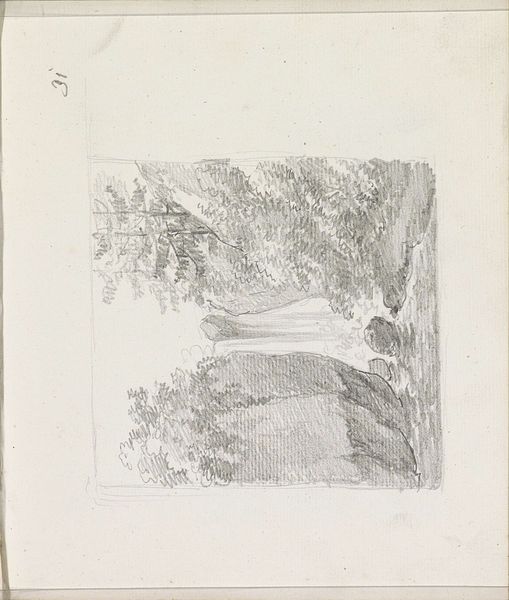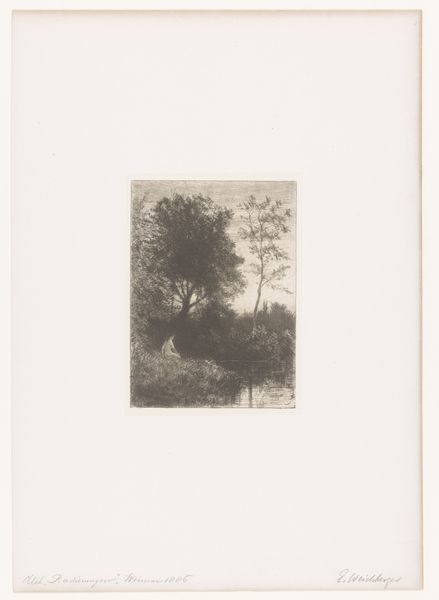
Copyright: CC0 1.0
Curator: This is Jules Michelin's "Sweet Chestnut Tree in Royat", held here at the Harvard Art Museums. What's your first take? Editor: It feels dark, almost claustrophobic, despite depicting a natural scene. The light is so concentrated in a few areas, it creates a very dramatic effect. Curator: Michelin, active in the mid-19th century, was deeply involved in the etching revival. One can see his engagement with materiality in the rich textures and the visible labor of mark-making here. Notice the layering of the lines to create depth? Editor: I'm struck by how this image romanticizes the rural, but also subtly acknowledges a changing social landscape. The path, while natural, implies human intervention and a journey. Is it a public or private space? Who has access? Curator: Interesting point. The print medium itself allows for wider distribution and consumption. Michelin is not just depicting nature, but crafting it for a specific audience through the very act of production. Editor: Indeed. Art then becomes a conduit for social commentary and perhaps even a tool to negotiate shifting class boundaries during urbanization. This humble tree is a silent witness. Curator: So, in a way, Michelin’s print reveals how landscapes were being reimagined and commodified during this period. Editor: Precisely, and understood not merely as scenery, but as markers of complex social narratives.
Comments
No comments
Be the first to comment and join the conversation on the ultimate creative platform.
